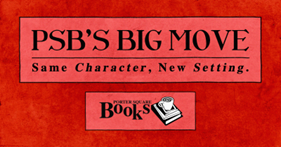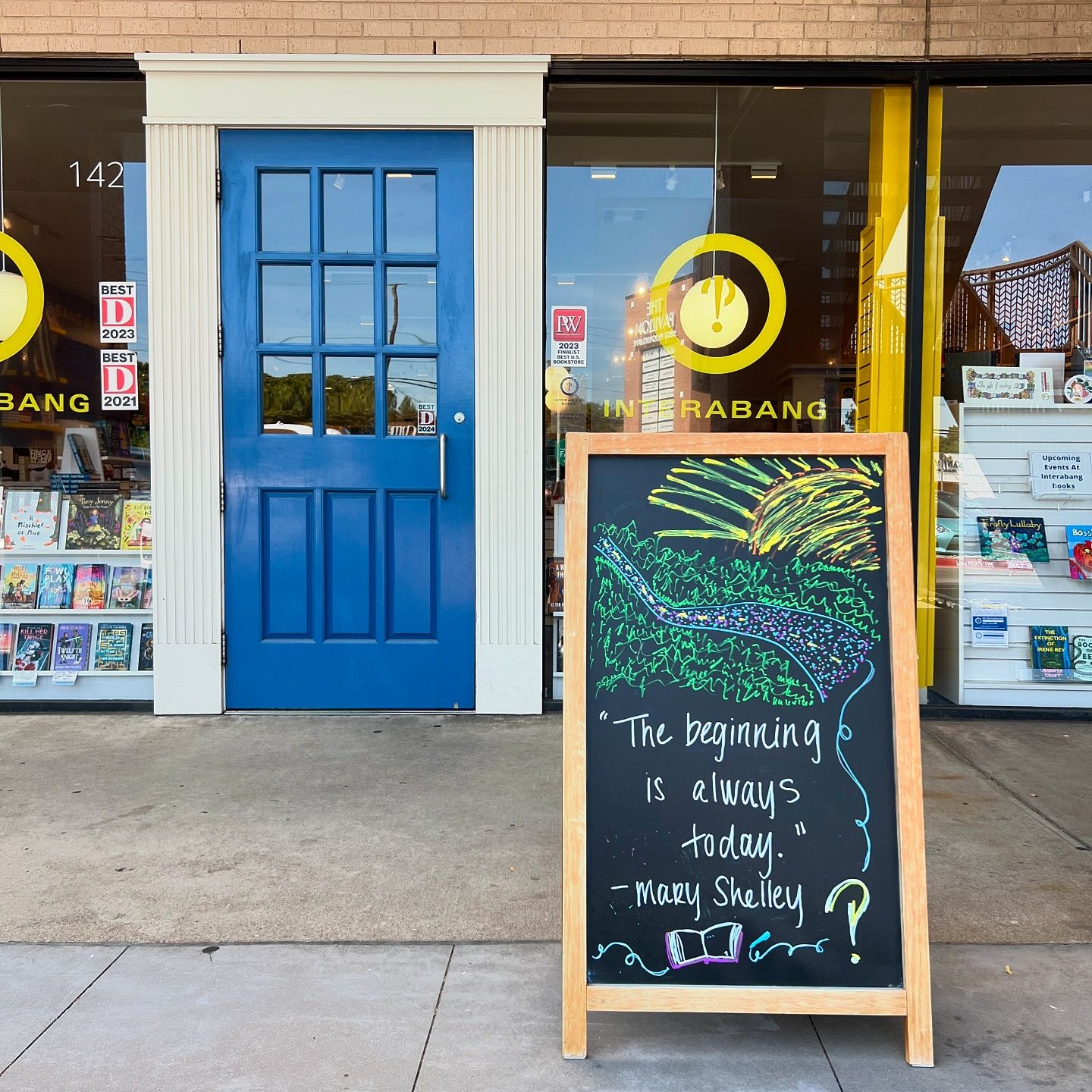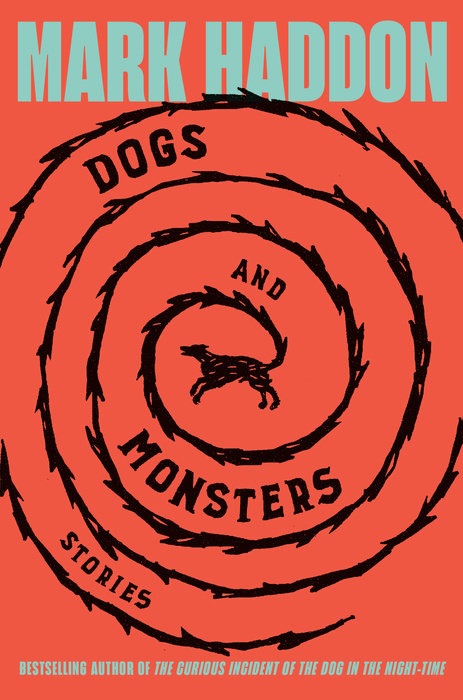 The following is Betty K. Prashker's contribution to Among Friends: An Illustrated Oral History of American Book Publishing & Bookselling in the 20th Century, published last fall by Two Trees Press and distributed by Ingram Content Group. It's entitled "The Tumultuous Journey" and recounts her career in publishing, the many outstanding books she edited, what is what like for a woman to work in publishing in the post-war era, and the joy of eventually publishing groundbreaking books on women's issues:
The following is Betty K. Prashker's contribution to Among Friends: An Illustrated Oral History of American Book Publishing & Bookselling in the 20th Century, published last fall by Two Trees Press and distributed by Ingram Content Group. It's entitled "The Tumultuous Journey" and recounts her career in publishing, the many outstanding books she edited, what is what like for a woman to work in publishing in the post-war era, and the joy of eventually publishing groundbreaking books on women's issues:
I attended a private school in New York City, guided by the words of John Dewey: We learn to do by doing. When we studied China, the class spent time in Chinatown. When we studied biology and the reproductive system, we took care of babies--real two-month-old babies--in our very own nursery. We also had educators and psychologists prowling the halls to see if we were acquiring the knowledge and skills necessary to deal with the real world.
One day when I was in the sixth grade, one of the psychologists asked if he could speak with me. We sat on a bench in the hall and after a bit of preliminary chit chat, he asked me if I had any ideas about what I wanted to do after college. Did I have thoughts about a career? I said I wanted to read. He nodded and said, "Of course you will have to read in order to do whatever it is you want to do, but reading isn't a profession, it is just something you do to acquire the knowledge you need or to amuse yourself." He looked at me expectantly. I think I looked back blankly. The interview was over,
I did get a B.A. in English at Vassar. It required a prodigious amount of reading in modern fiction, particularly the work of James Joyce. After graduation, I was able to get a job on the Washington Post as a copy girl. I ran copy around the newsroom and got sandwiches for the city editor's lunch. One day it was turkey on rye with Russian dressing, the next day it was corned beef on rye with mustard and a pickle. After a few months I realized there were no female reporters in the city room, only copy girls. It was time to move on.
Back in New York City, I tried my luck with book publishers. It was the summer of 1945. World War II was finally over, but the men had not yet returned to their pre-war jobs and book publishers were hiring women. I walked miles of city streets searching for an entry level job. Finally, through a combination of luck and a cousin who knew someone in the sales department at Doubleday, I was hired as a READER. On my first day as I opened the box to read my first manuscript, I did think of that middle school conversation I had so many years ago with the psychologist.
That job at Doubleday was the beginning of my life in book publishing. It was a time of explosive growth, a slam dance of change as a handful of eponymous companies morphed into a powerful industry. I started reading unsolicited manuscripts, but I quickly learned that there was a lot more to book publishing than reading. Reading was important and primary in the quest to discover or create books that we thought others would buy and enjoy. Sometimes we would develop ideas for books and try to find authors for them. Sometimes we would decide that certain public figures should tell their stories and we would have to find writers to help them do it. Sometimes, quite often, editors would be handed a manuscript with great potential that was a total mess, and we were expected to turn it into a publishable book. Some writers welcomed our help. Others rejected it.
Young editors progressed by working on books acquired by other editors. My first inherited project was Richest of the Poor, a biography of St. Francis of Assisi by Theodore Maynard. I knew practically nothing about Francis but enjoyed working on the project. The author was an experienced biographer and had published a number of lives of the saints. My job was to shepherd the project through design, copyediting and presentation to the sales force. I was nervous and excited about every part of the process. I knew I had found the right job for whatever skills I possessed.
I worked at Doubleday for six years, then left for marriage and family. It was a ten-year interregnum from 1950 to 1960. When I tried to return to the workplace, I could not find a job in book publishing, but I did find work as a copywriter at a book advertising agency. One of the first books I worked on was The Feminine Mystique by Betty Friedan. I helped develop the print ad campaign for the book, and began to grapple with the situation Friedan was describing. I spent two years writing ads for books, longing to be an editor again. I finally got a job at Coward-McCann as a senior editor. My boss, Jack Geoghegan, had been a sales rep at Doubleday. Now he had a small publishing house to restore. He had no list of authors and one editor. But he knew how to sell books and he had a plan. He told me to get submissions from three top literary agents, none of whom I knew. I was able to crack the palace guards of two of them. But I never even got to talk on the phone with the third.
So began two years of cobbling together enough projects to produce a list to present to sales reps and making sure the books got written. We did a biography of Cardinal Cushing of Boston. An instructional book on decoupage. Romantic fiction by Elizabeth Goudge. A couple of Hollywood biographies. Nothing really big. But then came the miracle: Jack Geoghegan acquired a British Word War II thriller we had some hopes for. He sent galleys out to various authors hoping to get some good comments we could use on the book jacket. One day he received a letter from Graham Greene. It read, "This is the best spy story I have ever read. It may be the best spy story anyone has ever read." The book was The Spy who Came in From the Cold, the author John le Carré. That book zoomed up the bestseller list. And Coward McCann became a real player in the book publishing community which was emerging from a small cluster of eponymous companies--Alfred A. Knopf, Henry Holt, etc., founded by rich men who didn't want to work on Wall Street--to become major purveyors of information and entertainment. Mega-companies like RCA and CBS began to acquire publishers as a source for movies and television. It was an intoxicating, exciting time to be working with books.
In 1966, the legendary editor in chief Ken McCormick hired me back at Doubleday and it is there that I started acquiring books about women, books by women that opened my eyes to problems I had always faced personally but thought were an integral, unchangeable part of the human condition. I began to find and publish books that raised questions about these conditions. As we used to say in the 1970s, the scales fell from my eyes. Growing Up Female in America by Eve Merriam explored these issues, Women and Madness by Phyllis Chesler spotlighted the ways in which women were diagnosed and hospitalized for mental illness. Abigail McCarthy's Private Faces, Public Places explored the expendability of the political wife. Later, Backlash by Susan Faludi examined the undeclared war against women.
Strong projects with feminist themes came my way. A friend at Barnard College told me about a Ph.D. candidate at Columbia whose thesis analyzed the work of D.H. Lawrence, Norman Mailer and Henry Miller. These were writers I had read and, for the most part, admired. I read the manuscript with total absorption. This writer's analysis of their work was iconoclastic and brilliant. Her name was Kate Millett, the title was Sexual Politics. When Doubleday published the book in 1972, it was reviewed by the New York Times on two successive days. Two weeks later, Kate Millett's portrait was on the cover of Time magazine. She led the women's liberation parade down Fifth Avenue. It was a fabulous moment, and certainly a high point in my career.
There were plenty of low points. An editor/publisher's career is always a mixed bag. I worked with many successful authors including Judith Krantz, whose popular fiction for women made her a superstar. I published Jimmy Stewart's poems about his dog, Patty Davis' novel about her mother, Nancy Reagan. I left Doubleday shortly after it was acquired by the German publishing company Bertelsmann and joined Crown, a small family-owned company with an adventurous spirit. There, I took over as editor of Jean Auel's incredible Earth's Children series that began with The Clan of the Cave Bear. I published Erik Larson's Isaac's Storm and The Devil in the White City. Publishing a book is a team effort. And a large part of the excitement comes from working with others. We celebrated our hits and mourned our losses as a team.
More change was in the offing. Crown was bought by Random House. And then, guess what, Random House was bought by Bertelsmann. It seemed like the end of an era, and in fact it was. It was time for me to step aside. Publishing had been a tumultuous journey. I embraced all of it, including the failures, and there were quite a few. Best of all, I was able to make my way through the golden age of book publishing by doing what I always look forward to doing--READING.

 Co-owner and marketing director Josh Cook added, "Buying a building in the Porter Square neighborhood was never going to be a possibility for us, but having a landlord that understands the value we bring to the community and works to cultivate that value matters. Lesley made it clear that they want to be that kind of landlord."
Co-owner and marketing director Josh Cook added, "Buying a building in the Porter Square neighborhood was never going to be a possibility for us, but having a landlord that understands the value we bring to the community and works to cultivate that value matters. Lesley made it clear that they want to be that kind of landlord."



SHELFAWARENESS.1222.S1.BESTADSWEBINAR.gif)


SHELFAWARENESS.1222.T1.BESTADSWEBINAR.gif)


 Barnes & Noble will open a new store in Lexington, Ky., tomorrow, August 21.
Barnes & Noble will open a new store in Lexington, Ky., tomorrow, August 21.
 "What if we told you we host weekly storytimes for the little ones? And at both stores! Yes way!... Be sure to swing by early, it gets super busy!"
"What if we told you we host weekly storytimes for the little ones? And at both stores! Yes way!... Be sure to swing by early, it gets super busy!" 
 An Honorable Assassin
An Honorable Assassin Though he's best known for his award-winning novel The Curious Incident of the Dog in the Night-Time, English writer Mark Haddon is equally talented when it comes to short fiction.
Though he's best known for his award-winning novel The Curious Incident of the Dog in the Night-Time, English writer Mark Haddon is equally talented when it comes to short fiction.
 The following is Betty K. Prashker's contribution to
The following is Betty K. Prashker's contribution to